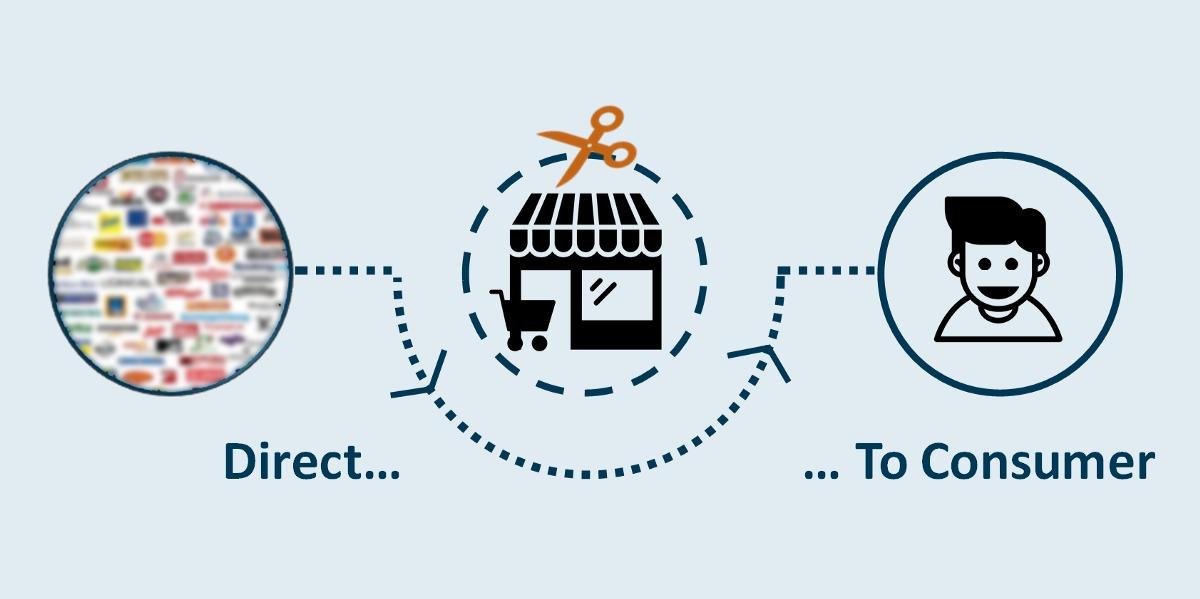D2C Marketing: The Ultimate Guide to Direct-to-Consumer Success in 2025

In today’s rapidly evolving digital landscape, D2C marketing has emerged as a powerful growth channel for brands looking to bypass traditional retail and connect directly with customers. As the line between commerce and content continues to blur, direct-to-consumer marketing is more than a buzzword—it's a blueprint for building sustainable, high-margin businesses that thrive on authentic connections, first-party data, and customer loyalty.
What is D2C Marketing?
D2C marketing, or direct-to-consumer marketing, is the strategy where brands sell their products directly to customers, without relying on third-party retailers, wholesalers, or marketplaces. By owning the full customer journey from discovery to post-purchase, D2C marketing brands can offer personalized experiences, collect data-driven insights, and scale profitably.
The Rise of D2C Marketing in 2025
The D2C landscape has evolved drastically in the last decade. Fueled by eCommerce platforms, social media advertising, and consumer demand for authenticity, D2C marketing in 2025 is defined by:
-
Omnichannel presence across web, mobile, social, and physical spaces.
-
Hyper-personalized marketing using AI, predictive analytics, and customer segmentation.
-
Community-led branding through UGC, micro-influencers, and niche-focused tribes.
-
Fast, agile operations powered by dropshipping, 3PLs, and lean fulfillment networks.
Key Benefits of D2C Marketing
1. Total Control Over Brand Narrative
With no intermediaries, D2C businesses fully control their brand messaging, visual identity, and tone. This control allows them to build a consistent and emotionally engaging brand experience across every touchpoint.
2. Better Customer Insights
D2C channels provide a wealth of first-party data. From customer behavior and product preferences to feedback and repeat purchase patterns, brands can make data-driven decisions to optimize marketing, product development, and retention strategies.
3. Higher Profit Margins
By eliminating the middleman, D2C brands can retain more margin, reinvest in customer acquisition, improve product quality, and offer better value to consumers.
4. Personalized Customer Experience
The D2C model allows brands to tailor messaging, promotions, and product offerings based on user preferences, leading to improved engagement and lifetime value.
Top Channels for D2C Marketing in 2025
1. Social Media Advertising
Platforms like Instagram, TikTok, Facebook, and YouTube remain at the heart of D2C success. Short-form video, product reviews, and social commerce integrations make them ideal for engagement and conversions.
2. Influencer and Creator Collaborations
Micro-influencers with niche audiences drive authentic word-of-mouth and generate high ROI. In 2025, successful D2C brands often co-create products or content with trusted creators.
3. Email and SMS Marketing
These channels continue to deliver unmatched conversion rates and ROI. Segmenting audiences by behavior and lifecycle stage helps craft high-performing drip campaigns, cart recovery flows, and loyalty promotions.
4. Branded eCommerce Stores
Owning your Shopify, WooCommerce, or custom store enables end-to-end optimization of the customer journey. From fast-loading UX to smart upsells, D2C websites are powerful profit engines.
5. Affiliate and Referral Programs
Encouraging happy customers and partners to refer others adds organic growth and boosts trust. Referral marketing has become a central growth loop for modern D2C companies.
D2C Marketing Strategies That Work
1. Build a Magnetic Brand Identity
Craft a brand story that resonates deeply with your audience. Use visual branding, mission-driven messaging, and consistent tone across every platform. Brands like Warby Parker, Glossier, and Owala excel at this.
2. Leverage UGC and Social Proof
User-generated content not only builds trust but also reduces content production costs. Highlight real customers using your products in ads, reviews, and testimonials. more
3. Launch With a Strong Hook
A compelling product launch or limited drop can generate buzz, collect early sign-ups, and foster a sense of exclusivity. Countdowns, waitlists, and influencer previews are powerful pre-launch tactics.
4. Retargeting and Personalization
D2C success lies in maximizing customer value. Implement behavior-based retargeting, AI-driven product recommendations, and personalized email flows to increase average order value (AOV) and repeat purchases.
5. Focus on Retention and Loyalty
Repeat customers are up to 7x more profitable. Use loyalty programs, VIP perks, surprise gifts, and tiered rewards to keep them engaged and reduce churn.
Examples of D2C Marketing Done Right
1. Dollar Shave Club
With humorous ads and a subscription model, they revolutionized men's grooming. Their D2C-first approach gave them viral reach and deep customer loyalty.
2. Allbirds
Focusing on sustainable materials and transparency, Allbirds connected with eco-conscious consumers directly through storytelling and direct sales.
3. Casper
They redefined how mattresses are sold by cutting out retail stores and using clever online content and trials to build trust.
Challenges in D2C Marketing (And How to Overcome Them)
1. Rising Customer Acquisition Costs (CAC)
Solution: Invest in organic content, SEO, influencer partnerships, and community building to diversify away from expensive paid channels.
2. Operational Complexity
Solution: Partner with tech-enabled 3PLs, use AI forecasting tools, and adopt agile inventory management to stay lean and responsive.
3. Scaling Beyond Online
Solution: Explore retail partnerships, pop-up stores, and wholesale hybrids to expand reach without losing brand essence.
Future Trends in D2C Marketing
1. Conversational Commerce
AI chatbots, WhatsApp marketing, and live shopping will redefine how customers interact with D2C brands in real-time.
2. Zero-Party Data
Collecting data willingly shared by consumers, like quiz responses and preferences, will become key to privacy-compliant personalization.
3. Web3 and Community Ownership
Some brands are experimenting with NFT-based memberships, DAOs, and tokenized loyalty systems to co-create with their audience. Visit for more info and order packaging boxes on our website custom product packaging.
Conclusion
D2C marketing empowers brands to cut through the noise, build real connections, and grow profitably. As technology advances and consumer behavior evolves, the brands that own their audience, invest in experiences, and act fast will dominate.
- Information Technology
- Office Equipment and Supplies
- Cars and Trucks
- Persons
- Books and Authors
- Tutorials
- Art
- Causes
- Crafts
- Dance
- Drinks
- Film
- Fitness
- Food
- Jogos
- Gardening
- Health
- Início
- Literature
- Music
- Networking
- Outro
- Party
- Religion
- Shopping
- Sports
- Theater
- Wellness


